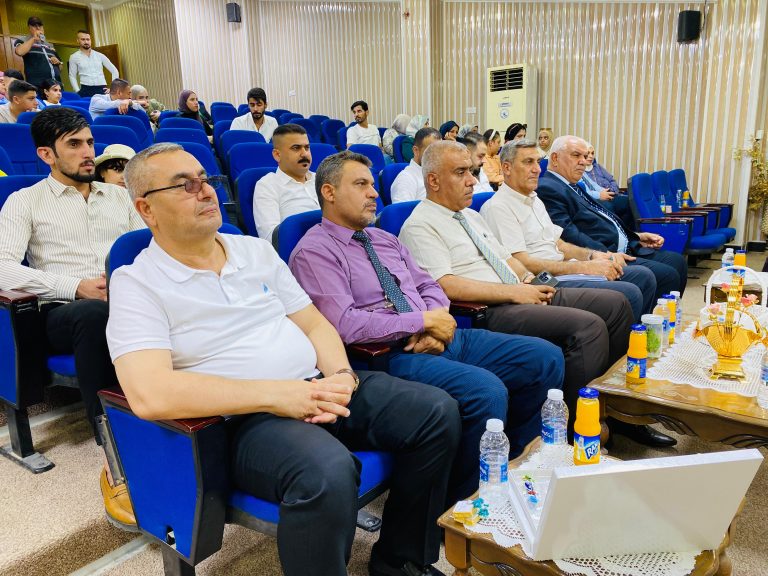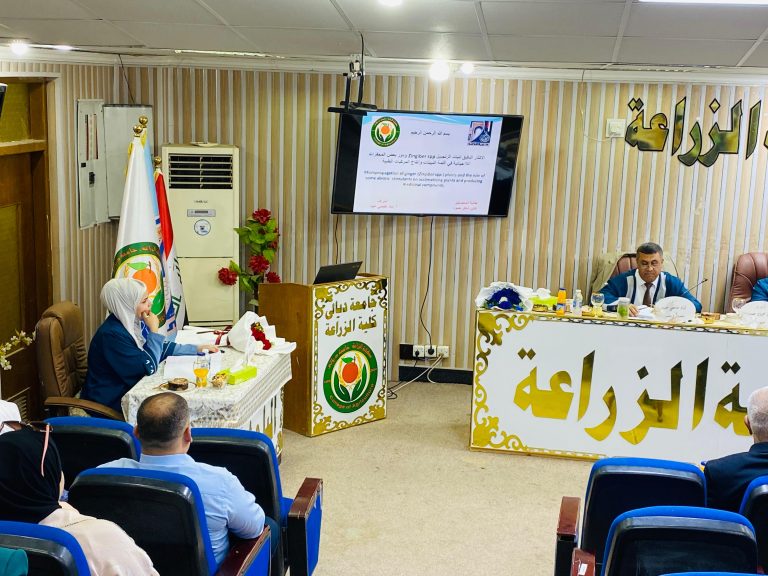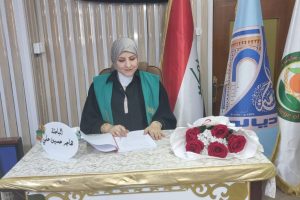A master’s thesis at the College of Agriculture
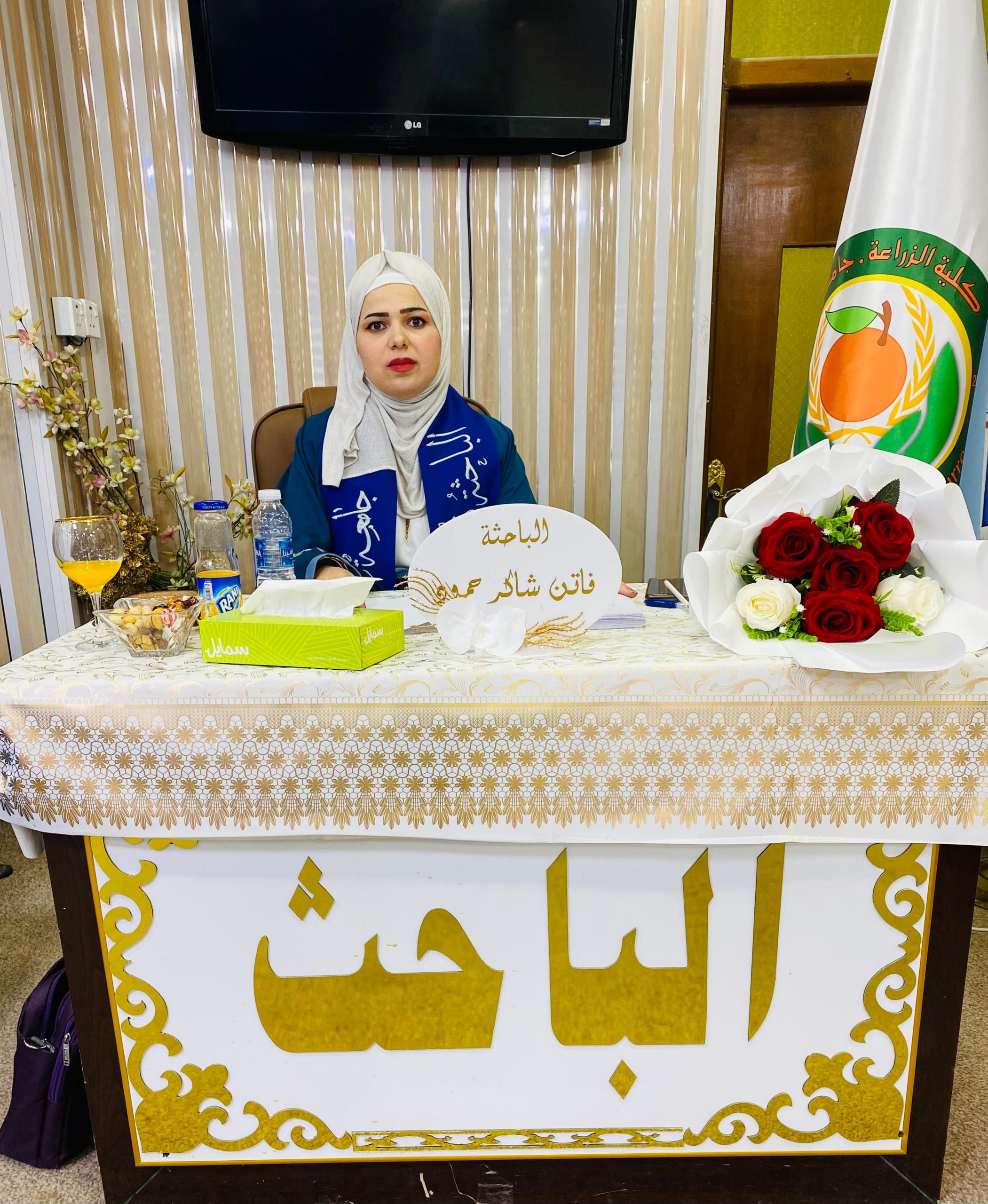
The College of Agriculture at the University of Diyala discussed a master’s thesis entitled “Micropropagation of Zingiber spp. (Ginger) and the Role of Certain Biostimulants in the Acclimatization of Plantlets and the Production of Medicinal Compounds.” The study, presented by the student Faten Shaker Hamoud, aimed to investigate the role of regulators in micropropagation, as well as the effects of sorbitol and arginine on plant growth, rhizome production, and the enhancement of Gingerol content in the rhizomes. Both tissue culture and field experiments were conducted on Zingiber officinale L. The tissue culture experiments were carried out in the Tissue and Plant Cell Culture Laboratory of the College of Agriculture at the University of Diyala, with the goal of propagating the plant through tissue culture. The addition of BA at concentrations of 2 and 3 mg/L to the culture media resulted in an increase in the average number of branches per explant, reaching 3.600 and 4.600 branches per explant, respectively. The results also showed that BA influenced the multiplication of single shoots and shoot tips, where hormone-free media produced the highest average shoot length and number of rooted shoots, reaching 2.729 cm and 9.000 rooted shoots per explant, respectively. The results of adding Kinetin revealed that the highest number of multiplied shoots, shoot length, and leaf number were obtained at concentrations of 0 and 6 mg/L, with values of 3.000 shoots per explant, 1.828 cm, and 4.700 leaves per plant, respectively. The study also investigated the effect of different concentrations of IBA on shoot rooting, with media containing 1.5 mg/L resulting in the highest rooting percentage of 81.6% and the greatest number of roots, reaching 4.200 roots per plant at a concentration of 1.0 mg/L. The acclimatization of the plantlets resulted in 40% of the plantlets adapting successfully when planted in a sterile medium of peat moss and sand at a 1:1 ratio, covered with transparent plastic until they reached the field.
In the field experiment, the vegetative growth results showed that spraying Arginine at a concentration of 200 mg/L significantly increased the number of branches, fresh and dry weight of the plant’s leaves, and chlorophyll content, reaching 4.516 branches per plant, 3.467 g, 0.407 g, and 46.125 SPAD, respectively, compared to the control treatment, which recorded the lowest values. The interaction between Arginine and Sorbitol resulted in a significant increase in vegetative growth characteristics for both planting seasons compared to the control treatment. Furthermore, the number of branches at the end of the summer season was significantly higher due to spraying Arginine at concentrations of 200 mg/L and 100 mg/L, reaching 3.658 and 4.516 branches per plant, respectively, compared to the control treatment, which recorded the lowest values. Spraying Sorbitol at concentrations of 30 and 45 g/L produced the highest number of branches, reaching 3.899 and 3.883 branches per plant, compared to untreated plants, which recorded the lowest values.
Spraying Arginine at 100 mg/L also had a significant effect on the mineral content of the leaves, increasing nitrogen (N), phosphorus (P), and potassium (K) for both planting seasons to 3.333% N, 0.445% P, and 3.777% K. Sorbitol spraying at 15 g/L for both growing seasons further increased these values to 4.114% N, 0.399% P, and 4.365% K. The results of root growth showed a significant increase in the average fresh weight of rhizomes, number of roots, and fresh and dry weight of roots when plants were sprayed with 200 mg/L L-Arginine, reaching 85.517 g, 6.517 roots per rhizome, 4.567 g, and 2.672 g, respectively. Sorbitol spraying at 45 g/L had a significant effect on the same traits, producing values of 114.133 g, 7.733 roots per rhizome, 5.300 g, and 2.653 g. HPLC analysis revealed that the addition of sorbitol at concentrations of 45, 30, 15, and 0 g/L, and arginine at 200, 100, and 0 mg/L, resulted in an increase in both vegetative and root growth compared to the control treatment.
Based on the results obtained from this study, the following recommendations are made:
-
Propagate plantlets through tissue culture, acclimatize them, and compare their growth in the field with plants grown from field cultivation.
-
Produce tuberous roots from tissue culture propagation.
-
Utilize tissue culture techniques to propagate ginger and provide plant material for extracting secondary medicinal compounds, ensuring a significant and year-round supply of this important medicinal resource.
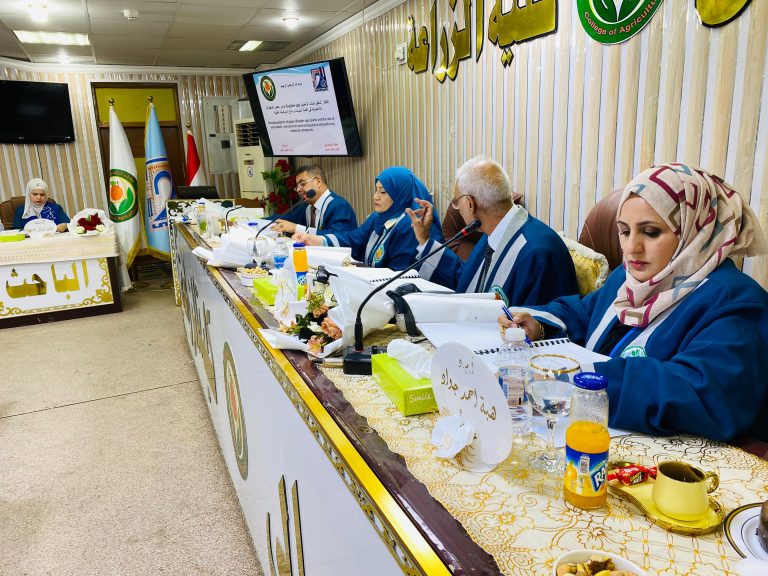
-
